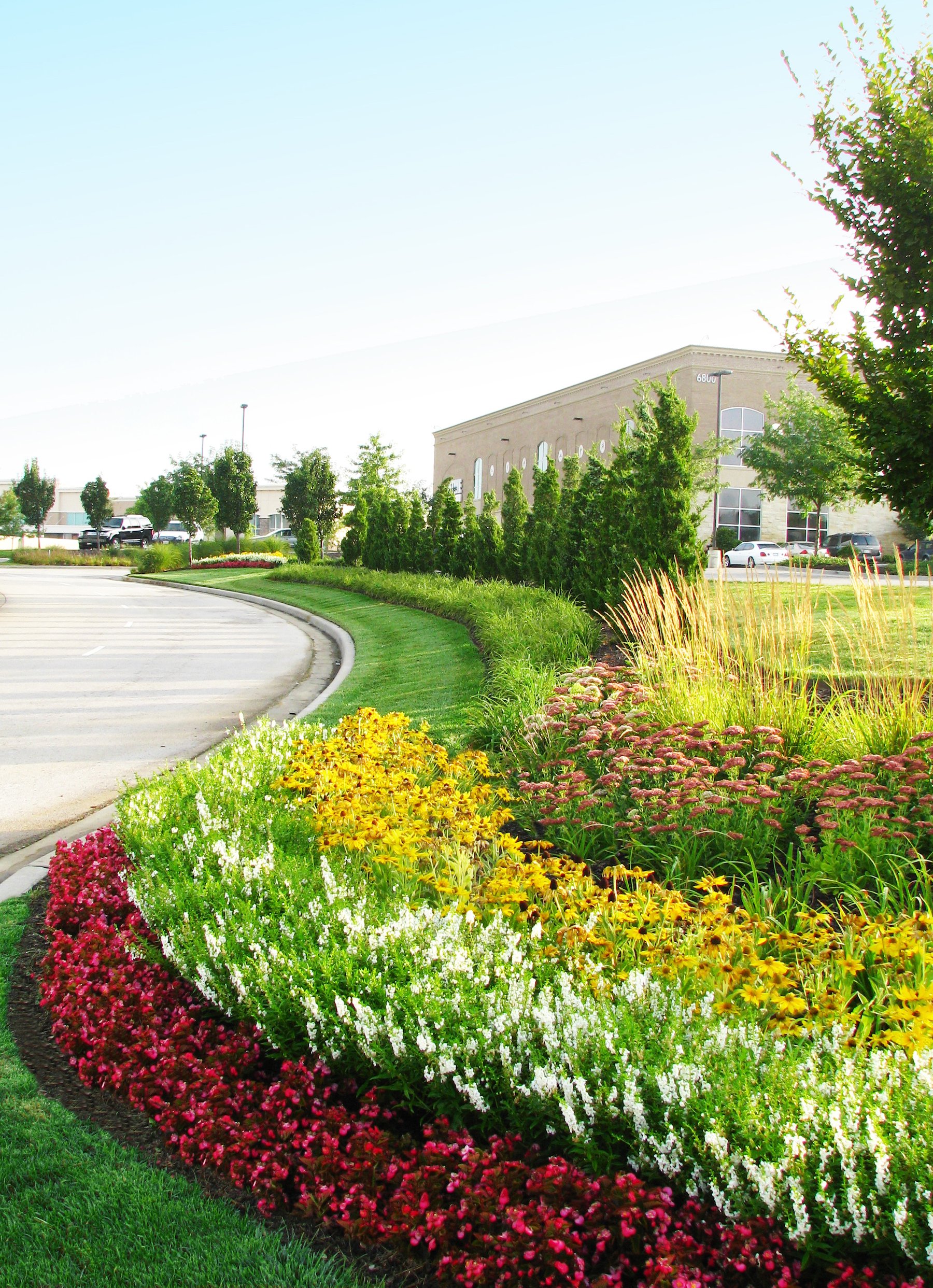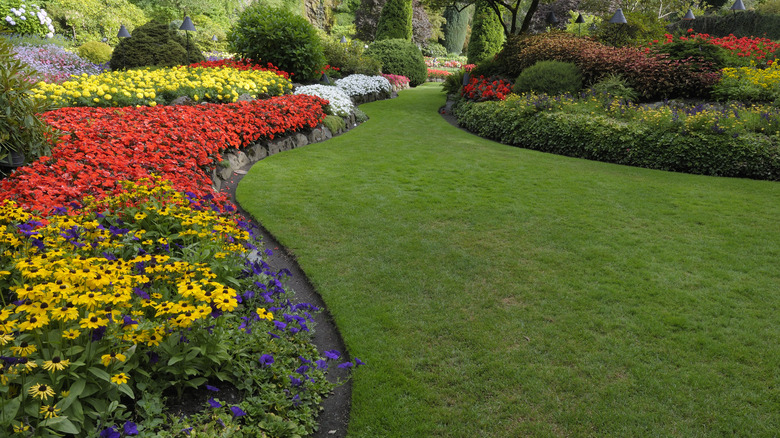Trusted Landscaping Company Jacksonville: Top Quality Landscaping Services for Your Home
Trusted Landscaping Company Jacksonville: Top Quality Landscaping Services for Your Home
Blog Article
Elevate Your Home's Visual With Lasting Landscape Design Layouts and Eco-Friendly Practices

Advantages of Lasting Landscape Design
Implementing sustainable landscaping methods not just conserves all-natural sources but additionally promotes biodiversity and enhances general ecological wellness. One substantial benefit is the reduction of water intake with the usage of drought-resistant plants, rain gardens, and reliable irrigation systems.
Moreover, sustainable landscape design can improve soil wellness by reducing making use of chemical fertilizers and pesticides, thereby producing a much healthier atmosphere for plant growth and helpful soil organisms. This, subsequently, improves the total durability of the landscape to hold up against ecological stressors and climate adjustment impacts - lawn cleanup Jacksonville. Furthermore, lasting landscaping methods can bring in varied wildlife, including pollinators like butterflies and , promoting a much more vibrant and balanced environment within the property
Incorporating Native Plants
To develop upon the advantages of lasting landscaping, a calculated focus on incorporating native plants can additionally boost ecological durability and advertise biodiversity within the landscape. Native plants are species that normally take place in a particular location and have evolved to thrive in the neighborhood climate, soil problems, and community. By including indigenous plants in landscape design designs, home proprietors can reduce water usage, decrease the demand for chemical pesticides and plant foods, and sustain the local wild animals populace.
Including native plants likewise helps in maintaining the one-of-a-kind personality and identification of an area's plants. These plants usually call for less maintenance once established, making them a cost-effective and lasting landscape design option in the lengthy run. In addition, indigenous plants can bring in indigenous pollinators like and butterflies, contributing to the general health and wellness of the ecosystem.
When choosing native plants for landscape design jobs, it is necessary to select species that are appropriate to the certain environmental conditions of the website. Consulting with herb gardens or regional nurseries can supply useful assistance on selecting the appropriate indigenous plants for a specific location. By incorporating native plants right into landscape design styles, residential property owners can develop beautiful, sustainable exterior areas that profit both the environment and the neighborhood.

Water Preservation Methods
Efficient watering techniques play a critical function in sustainable landscape design techniques, guaranteeing optimal water preservation initiatives in exterior areas. Implementing methods such as drip watering, rainwater harvesting, and clever irrigation systems can considerably lower water wastage while maintaining a healthy landscape. Leak watering delivers water directly to the origins of plants, reducing evaporation and overflow. Rain collecting this hyperlink includes collecting rainwater from roofs and saving it for later use in watering, decreasing the dependence on metropolitan water resources. Smart watering systems use climate information and soil dampness levels to readjust watering schedules, stopping overwatering and advertising water performance.
Along with advanced watering techniques, xeriscaping is one more water-saving landscaping technique that concentrates on utilizing drought-resistant plants, mulch, and effective irrigation to create a low-water landscape design - landscaping companies Jacksonville. By choosing indigenous plants that are appropriate to the local climate and soil conditions, homeowner can special info lower the demand for too much watering, inevitably preserving water and advertising a lasting outdoor environment
Eco-Friendly Hardscaping Ideas
Enhancing outdoor rooms with eco-friendly hardscaping features can contribute dramatically to sustainable landscape design practices. Decide for products like reclaimed wood, recycled concrete, or all-natural stone to minimize environmental impact when taking into consideration hardscaping elements. These products not just add an unique visual attract your exterior space yet additionally minimize the demand for new sources extraction.
Applying absorptive leading alternatives such as crushed rock or permeable concrete can assist decrease water drainage and advertise groundwater recharge. These choices allow rainwater to seep right into the ground, protecting against erosion and minimizing the problem on stormwater systems.
Incorporating indigenous plants right into hardscaping layouts can additionally improve eco-friendliness by supporting regional wild animals and minimizing the need for extreme watering or chemical treatments. By including green walls or vertical gardens, you can introduce much more plant life right into city setups, enhancing air quality and biodiversity.
Including energy-efficient lighting, such as solar-powered LEDs, right into hardscaping styles can reduce electrical power consumption and reduced your residential property's carbon footprint. Focusing on green hardscaping concepts not only enhances the charm of your exterior space however also demonstrates a dedication to ecological stewardship.
Maintenance Tips for Lasting Landscapes

Consistently trim plants to advertise healthy development and avoid overgrowth that can bring about pest conditions or invasions. Use natural plant foods to nourish the soil and plants without dangerous chemicals that can seep right into the environment. For hardscaping aspects, such as permeable pavers or rock paths, consistently clean them to prevent debris buildup and maintain their performance. By remaining positive with maintenance jobs, you can protect the beauty and sustainability of your landscape for years to come.
Final Thought
In final thought, lasting landscaping techniques provide many benefits for homeowner, from improving the aesthetic appeal of the environments to promoting environmental conservation. By incorporating indigenous plants, implementing water preservation methods, and using environmentally friendly hardscaping ideas, property proprietors can produce attractive landscapes that are also eco accountable. With correct maintenance, sustainable landscapes can contribute and prosper to a much healthier ecosystem for both people and wild animals.
Furthermore, lasting landscape design can enhance soil wellness by lessening the use of chemical plant foods and chemicals, thereby developing a healthier environment for plant development and advantageous soil organisms.To construct upon the benefits of lasting landscape design, a calculated emphasis on incorporating native plants can even more improve environmental durability and promote biodiversity within the landscape. By consisting of native plants in landscape design designs, property proprietors can lower water usage, minimize the requirement for chemical pesticides and fertilizers, and support the regional wildlife population.
These plants frequently need less upkeep when developed, making them a sustainable and cost-effective landscaping solution in the long run. By integrating native plants into landscaping styles, property owners can develop beautiful, sustainable outdoor rooms that benefit both the environment and the area.
Report this page